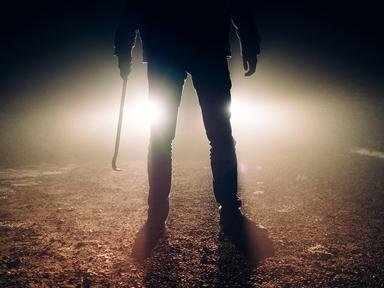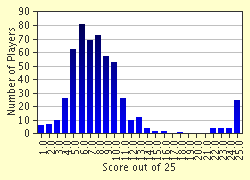Quiz Answer Key and Fun Facts
1. The name "Jack The Ripper" first appeared in the "Dear Boss" letter, received by the Central News Agency on September 27, 1888. Generally accepted to be the work of an enterprising journalist, who is suspected of giving the murderer his famous moniker?
2. At the height of the murders, the Metropolitan Police estimated that Whitechapel was home to over two thousand street prostitutes.
3. Who discovered the body of the first canonical Ripper victim, Mary Ann Nichols?
4. The image of Jack The Ripper as a cloaked figure carrying a medical bag through the foggy, gaslit streets of London, persists to this day. With whom did the "black bag" originate?
5. Sir Henry Smith, Assistant Commissioner of the City Police, was in charge of the investigation into the murder of Catharine Eddowes. What angered him most about the Mitre Square murder?
6. Catharine Eddowes had the initials "T.C." tattooed in blue ink on her left forearm. What did the initials stand for?
7. According to Detective Sergeant Halse, the Goulston Street graffiti was written in three lines. What size were the letters?
8. Allow me to play devil's advocate. Let's assume that the Goulston Street graffiti, "The Juwes are the men who will not be blamed for nothing," was a genuine clue left by Jack The Ripper. Which of the following suspects would be the logical choice as author of the message?
9. Sir Robert Anderson, head of the CID in 1888, published his memoirs, "The Lighter Side of My Official Life," in 1910. According to Anderson, what brought the Ripper murders to an end?
10. Which of the following high ranking officials was known to spend his off-duty hours patrolling the streets of Whitechapel, in search of the Ripper?
11. After the murder of Catharine Eddowes, the Commissioner of the City Police recommended that a reward be issued for the apprehension of her killer(s). How much was the reward?
12. The public's disdain at their ineffectiveness, combined with the immediate posting of a reward for Eddowes' murderer, were the catalysts that precipitated the Home Office's decision to finally offer a reward in the Nichols, Chapman, and Stride cases.
13. In addition to raising funds for a reward, The Mile End Vigilance Committee organized nightly patrols through the streets of Whitechapel. This was done in an effort to aid police in their daunting task of apprehending the Ripper. Apart from boots and a stout stick, what did members of the patrol carry?
14. On how many occasions did clairvoyant Robert James Lees offer his services to the authorities?
15. Who was the first person through the door of Number 13 Miller's Court, site of Mary Kelly's murder?
16. With regard to the Miller's Court murder, what testimony was shared by witnesses Elizabeth Prater and Sarah Lewis?
17. Although he was the coroner for the Whitechapel District, why didn't Wynn Baxter preside over the Kelly inquest?
18. The day after Mary Kelly's murder, who made the following statement: "All these courts must be lit and our detectives improved"?
19. John McCarthy, Mary Kelly's landlord, said after seeing her body, "It looked more like the work of a ___, than a man."
20. All of the Ripper's victims had their throats cut from left to right.
21. Although a large segment of the population believed that no Englishman could possibly be responsible for the Whitechapel murders, only two witnesses described suspects as foreign in appearance. One was Elizabeth Long. Who was the other?
22. Both Mary Kelly and Catharine Eddowes showed signs of connexion.
23. Other than the fact that all of the murdered women were from Whitechapel, there is no evidence to suggest that the Ripper himself resided in that district.
24. The grave of which Ripper victim no longer exists?
25. Modern crime solving techniques have been used to try to identify the man responsible for the Whitechapel murders. Who do FBI profilers name as the most likely suspect?
Source: Author
ripper1
This quiz was reviewed by FunTrivia editor
DakotaNorth before going online.
Any errors found in FunTrivia content are routinely corrected through our feedback system.

